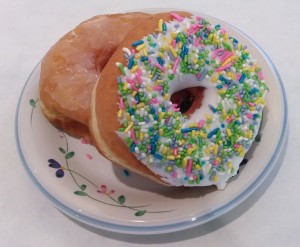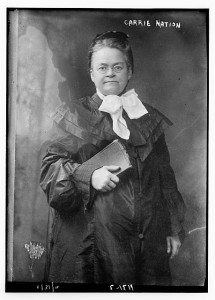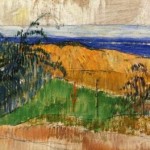 National Doughnut Day is today. It is celebrated yearly on the first Friday in June. The day originally honored those volunteers who made and served doughnuts to servicemen and servicewomen since World War I. Today the day honors the delicious treat and its history as well. Over ten billion doughnuts are consumed yearly in the United States! Idea: Children could design a new type of doughnut.
National Doughnut Day is today. It is celebrated yearly on the first Friday in June. The day originally honored those volunteers who made and served doughnuts to servicemen and servicewomen since World War I. Today the day honors the delicious treat and its history as well. Over ten billion doughnuts are consumed yearly in the United States! Idea: Children could design a new type of doughnut.
Homer Plessy in 1892 was arrested for refusing to give up his seat in a whites only train car. His arrest became the foundation for Plessy v Ferguson, which went to the Supreme Court. The justices basically condoned separate but equal facilities. Children can watch an excellent video about Plessy v Ferguson at: https://www.nps.gov/people/homer-plessy.htm.

Carrie Nation
Carrie Nation in 1899 in Kiowa, Kansas. attacked the first of many saloons, destroying the saloon’s liquor supply. She was promoting the temperance movement. Eventually the six-foot woman smashed, sometimes using a hatchet, about 30 taverns. She became famous for her exploits and her beliefs. Children could learn more at: Carrie Nation.
The $64,000 Question television game show premiered in 1955. Contestants answered questions about an area where they felt they were experts. If a contestant answered a question correctly, he/she could double the money won and move on to a more difficult question. The last episode of the show aired on November 2, 1958. Idea: Children could design and play a variation of The $64,000 Question.
Virginia Apgar (born Westfield, New Jersey 1909; died New York, New York, August 7, 1974) was a physician who developed the Apgar Score. Newborn babies receive the test, and doctors can then identify those infants who need special attention. The Apgar measures five quick checks at one minute, five minutes, and ten minutes. Children could learn more at: Virginia Apgar.
Gwendolyn Elizabeth Brooks (born Topeka, Kansas, 1917; died Chicago, Illinois, December 3, 2000) was the first African-American to win the Pulitzer Prize for poetry. Her book, Annie Allen, took the prize in 1950. Children could read some of her poems at: http://www.poemhunter.com/gwendolyn-brooks/. They could also read A Song for Gwendolyn Brooks, written by Alice Faye Duncan and illustrated by Xia Gordon.

View of the Beach at Bellangenay
Paul Gauguin (born Paris, France, 1848; died Atoana, Hiva Ova, Marquesas, May 9, 1903) was an artist. He used bold colors and often painted landscapes. He was a stockbroker before he became a painter. He moved to Tahiti about three years after he became an artist. Visit a website at: Paul Gauguin. Idea: Children could view Gauguin’s work. He and van Gogh actually shared a house for a while. Children could compare the two artists’ works.
Nikki Giovanni (born Knoxville, Tennessee, 1943) is an African-American poet and writer. Her works for children include The Sun Is so Quiet and Lincoln and Douglass: An American Friendship. Her book Rosa, a tribute to Rosa Parks, was illustrated by Bryan Collier. He received a 2006 Caldecott Honor Award, as well as the Coretta Scott King Award for Illustrators. Children could visit her website at: Nikki Giovanni.
Georgess McHargue (born New York, New York, 1941; died Groton, Massachusetts, July 18, 2011) wrote at least 25 books for children. Her works include See You Later, Crocodile and The Talking Table Mystery.